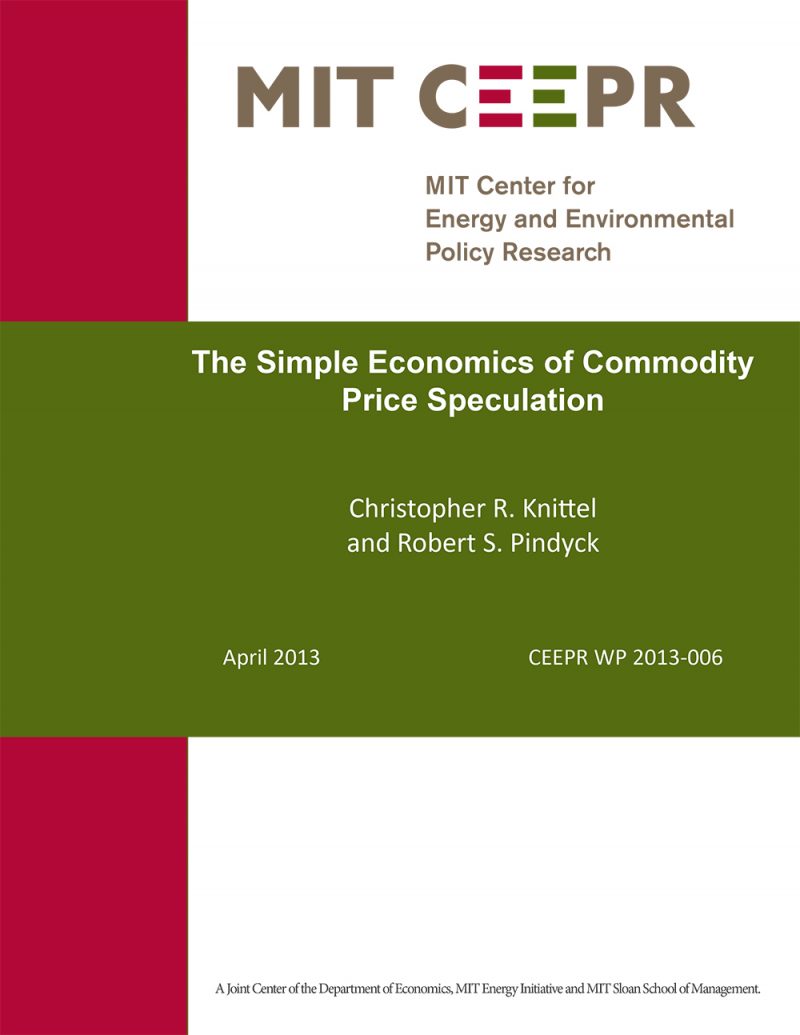The Simple Economics of Commodity Price Speculation
Christopher R. Knittel and Robert S. Pindyck
April 2013
The price of crude oil in the U.S. had never exceeded $40 per barrel until mid-2004. By 2006 it reached $70 per barrel, and in July 2008 it reached a peak of $145. By the end of 2008 it had plummeted to about $30 before increasing again, reaching about $110 in 2011. Are “speculators” to blame for at least part of the volatility and sharp run-ups in price? We clarify the potential and actual effects of speculators, and investors in general, on commodity prices. We focus on crude oil, but our approach can be applied to other commodities. We first address the question of what is meant by “oil price speculation,” and how it relates to investments in oil reserves, oil inventories, or oil price derivatives (such as futures contracts). Next we outline the ways in which one could speculate on oil prices. Finally, we turn to the data, and calculate counterfactual prices that would have occurred from 1999 to 2012 in the absence of speculation. Our framework is based on a simple and transparent model of supply and demand in the cash and storage markets for a commodity. It lets us determine whether speculation as the driver of price changes is consistent with the data on production, consumption, inventory changes, and changes in convenience yields given reasonable elasticity assumptions. We show speculation had little, if any, effect on prices and volatility.



